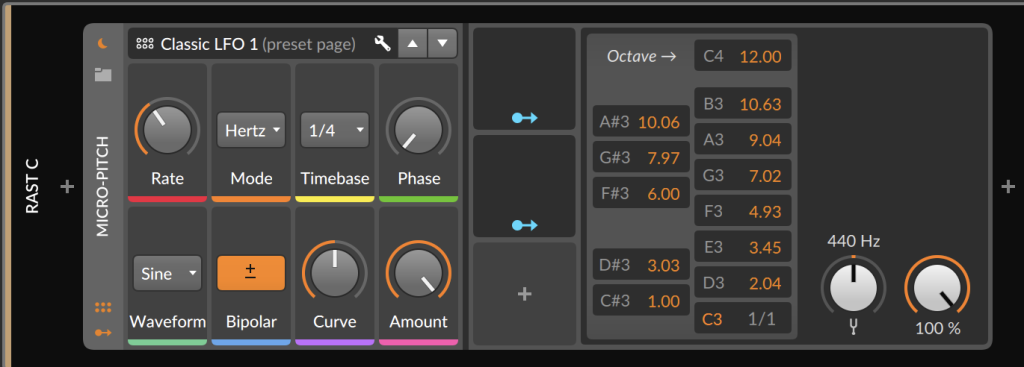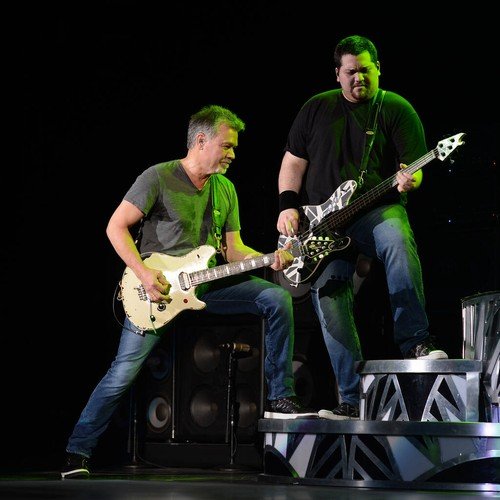Making instruments work in tune with musicians and singers means making them work with more than 12-tone equal temperament alone. So it’s great to see this profile of Hany Manja and his duo Rust with Petra Hawi. Plus Bitwig Studio users can get your hands (and ears) into the action – with a Micropitch download.
The duo Rust is deserving of more attention. Syrian-born Hany Manja is already a talent worth noting – co-founder of the Beirut Synth Center, which in turn owes some ideas to the community spirit of the Synth Library in Prague. I wrote about that project in depth already:
Beirut Synthesizer Center is a home for Lebanon’s artists, even when electricity is scarce
And it’s worth watching our conversation at Superbooth:
Beirut Synthesizer Center at Superbooth, on sharing and music in times of crisis
Add to that Petra Hawi, who is just a drop-your-jaw-on-the-floor terrific singer. It’s actually hard to completely capture that in videos; it’s great to be in the same room, live. Petra just has all this power in her voice, which as a semi-struggling singer I can tell you is key to being able to support intonation.
I was going to say fundamentally it’s essential for electronic instruments to play in tune, but that’s not entirely correct. I’ve been around Indonesian composers (both in Indonesia and in the US) who loved mixing tonalities, for instance. But that proves the point, really: it should be the composer’s decision, not a restriction of the technology.
It’s obvious for Arabic musicians to want their electronic palette to be able to tune to maqams the same way a great singer or instrumentalist can. And the fact that some programmer with a rudimentary grasp of even western tuning thinks 12 equal-tempered tones is “enough” and everything is “microtonal” isn’t really an excuse.
Claire Marie Lim talked about just this issue in her interview on vocal teaching – in her case, an Egyptian singer-producer had the same issue with effects and vocoder tools.
In detail:
I can play microtones on the oud — I would say quartertones [the notes between semitones in a Western chromatic scale]. What is very specific about Arabic scales are the intervals between notes (they are called quarter notes or three-quarter notes) – for example in C major scale the E note would be diminished approximately, but not exactly, 50 cent not a whole semi note. There are some possibilities, especially using Bitwig, to play those notes, but it’s different when your ears are used to the real, natural intervals of an acoustic instrument. When you transform [those microtonal melodies] into an electronic part, it can sound weird sometimes — to my ears, at least. Maybe to someone who’s used to the Western scales, it might sound exotic, but it wouldn’t be authentic for me. I use the Micropitch device and I love it. It’s accurate and very easy to use and with some modulations on some notes it gives the instrument a natural feel, which is very fundamental for playing Arabic scales that are usually performed on acoustic instruments.
Hany is great in the interview, – not only in talking about why this is important, but also his personal journey through the music. And really appreciate something with the subtlety of maqams means doing a whole lot of study, wherever you may have grown up.
That issue of study could be where all of us take music technology: not only to look for the latest, shiny thing but to develop our own minds and ears. It’s really a pleasure to get to do that.
These are two nice presets to begin – Bayati and Rast, two of the more frequently encountered maqams. (Everyone loves Rast!)

Download: https://downloads.bitwig.com/External%20Presets/Hany%20Manja_Micropitch_Presets.zip
There’s also some overlap between maqam Bayati and an equivalent Turkish mode (among others), and Rast and the Persian dastgah of the same name. You’ll generally find connections between the maqams and musics across the region, including in Jewish and eastern Christian musics – which I point out just to fully discredit the notion that tuning like this is some kind of exotic niche rarity. It’s really 12-tone equal temperament that’s the edge case; it only barely fits western concert music and was rare in that context before well into the 19th century. But I digress.
Just like any intonation, this is something you practice and grow into and savor. It’s great to have these presets as a tool, but tuning is also not a preset – which is why working on it is so rewarding.
And, of course, everyone should listen to Asmahan and Umm Kulthum because … who isn’t going to love that?
It’s great to take in the live performances of Umm Kulthoum’s songs – here you even get subtitles – because of the waves of audience appreciation that crash over moments in the songs. It’s hard not to be immediately moved by these songs, but hear you get a feeling for how the audience hears them.
Umm Kulthum ( أم كلثوم ) live; “Enta Omri” (English subtitles)
And bunch more where that came from:
Plus go check Rust, too!




